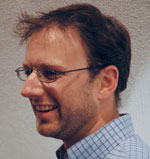From the editor: Many different roles
 |
Science plays many different roles in society. And as much as some scientists might want to remain "pure" and insulated from non-scientific concerns, there is no escaping the vital and important links that exist.
Sometimes scientists explicitly use science to achieve more than the latest research results. For example, the SESAME synchrotron project in the Middle East adopts the UNESCO slogan "science for peace" as a fundamental part of its mission. In this issue of symmetry, Mike Perricone speaks with scientists and policy leaders about the role of SESAME, how it works as a way for physics to drive a larger agenda, and how it provides much needed scientific infrastructure for a scientifically underrepresented part of the world. But as is clear, this progress can only happen with the support of the American, European and Asian scientific communities. It is certain that this support will be repaid in many ways in the future as a more global, better developed scientific community grows.
In a completely different sort of interaction, science influences art. In recent years, there seems to have been an explosion of science-inspired art with a huge variety of projects exploring links between the fields. While some of the relationships between science and art in these projects are superficial at best, others seem to tap into something deeper. In this issue, we are pleased to showcase a gallery of particle- and quantum-physics-inspired paintings that we feel surpasses the norm of science-inspired art. Not just an educational tool, nor a simplistic representation, the work by Dawn Neal Meson captures something of the process of understanding physics. Many scientists are sure to recognize in the paintings their own efforts at visual comprehension and modeling of complex ideas. But how much can physics and art really benefit each other? Can art give something back to science? It's a complex issue that we shall explore in a future issue. For now we present this view of imagery that we hope will please the eye and challenge the mind.
A reflection on the interactions between physics and other human endeavors is apt as we move into 2005, the World Year of Physics, as recognized by the United Nations. Next year is an opportunity for physicists to show what they do and why the rest of the world should care. It is also a great chance for the physics community to learn more about how its work is perceived outside the halls of academia and industry. In symmetry, we'll be kicking off 2005 with an issue in late January that includes special commentaries and features to celebrate the 100th anniversary of Einstein's miraculous year.
David Harris
Editor-in-Chief
Click here to download the pdf version of this article.


